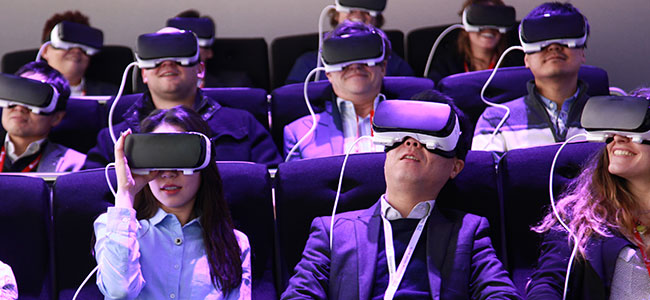The Mobile World Congress, which took place in Barcelona, celebrated everything mobile across several days of panels, demonstrations and other activities. From the event, certain trends emerged that marketers will want to take note of. Here’s a quick rundown.
Ad-blocking and ad selling continue to clash
We discussed the growing concern over mobile ad blocking this week, and it continued to be a hot topic during a panel at MWC. The panelists went back and forth about the value (or consequence) that comes from utilizing ad-blocking on mobile.
Roi Carthy, chief marketing officer for Shine – a company that blocks ads for its 14 million subscribers – explained that it’s the “single biggest threat to online advertising.”
“It may be blunt, but we believe our strategy is about helping expedite a solution,” he explained.
Some are concerned by these solutions, like fellow panelist Benjamin Faes, Google’s managing director of media and platform, who felt these solutions were punishing publishers.
Allie Kline, CMO for AOL, explained that companies should be less concerned about ads that are being stopped and instead focus more on consumer-friendly ads that they wouldn’t want to block.
That’s not an easy solution, according to Pete Blackshaw, vice president of digital and social media for Nestlé. “How do we figure out the right win-win model?” he asked. “We can’t ignore publishers, but we have to be sensitive to consumers. So how do we seize the moment?”

Virtual reality finds a big presence
Even with bigger units like the Oculus and PlayStation VR set to arrive this year, more companies are pushing for a virtual reality experience on mobile.
LG introduced a virtual reality headset called the 360 VR that is already getting buzz, while South Korea’s SK Telecom is also receiving a lot of attention.
This, on top of Google’s recently proposed headset and Samsung’s Gear VR (which is being given away with Galaxy S7 pre-orders), indicates that consumers are more than willing to give mobile virtual reality a shot – especially if it comes at a fraction of the price of the more deluxe headsets, like HTC Vive’s $799 model.
The Internet of Things continues to grow
More Internet-enabled appliances were introduced at the MWC, and while some items are questionable (do we really need a Fitbit for dogs?), it all ties in to a much bigger picture.
Research firm Gartner noted that the market for these devices will reach $101 billion this year, a 30 percent increase over the $78 billion spent last year. This includes smart refrigerators and other gadgets that will utilize an Internet connection.
Whether these devices really take off has yet to be seen, but curiosity is paying off at the event, with thousands of attendees checking out these savvy gadgets.

5G is taking the mobile market to the next level
4G is a pretty solid connection speed for mobile carriers these days, but that isn’t stopping research from going into the next level, as several telecom operators began offering demonstrations of 5G support.
However, it’s still a ways off from market, as the first 5G ultra-fast mobile networks aren’t set to begin testing until 2018.
Still, marketers may want to start getting ready to hype this feature, as it’ll be the next big thing when it comes to convenience with smartphones, especially for those that want to watch streaming TV or quickly complete downloads of favorite games or other apps. Lower latency and reaction times are expected to be key features as well.
Expect more details as testing gets closer, by about this time next year. In the meantime, a Chinese telecommunications company called Huawei is already playing around with the idea of 4.5G, a faster speed it intends to test out sometime this year. It probably won’t be as highly anticipated as 5G, but to some consumers, faster is faster.

